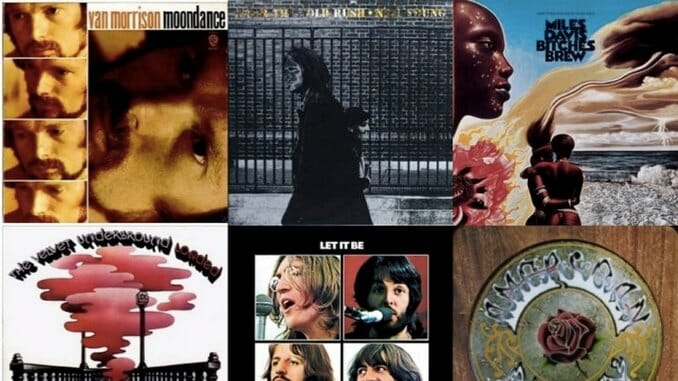
Looking back at the best albums of 1970, it quickly becomes clear that some fantastic albums are celebrating their 50th anniversary this year. The beginning of the 1970s was a time of transition with The Beatles, Jimi Hendrix and Simon & Garfunkel all releasing their final albums. Meanwhile, acts like Black Sabbath, James Taylor and Crosby, Stills & Nash had just were just gaining momentum. The Grateful Dead released two of their best albums in 1970, and Van Morrison, Neil Young and Miles Davis all released masterpieces. For a year when Elvis Presley’s “The Wonder of You” and Mungo Jerry’s “In the Summertime” were the two biggest hits, the album format was alive and well. Happy 50th anniversary to these 25 classic LPs from 1970.
25. The Beach Boys: Sunflower Ask anybody who’s had to suffer through Beach Boys’ renditions of “Barbara Ann” or “Be True to Your School” on oldie’s radio and they can confirm that the early work of the group could easily cross the threshold from sugary into sickly sweet. In contrast, 1970’s Sunflower takes the group’s penchant for sun-soaked melody and applies it more gently on an album that exudes warmth through skilled, elegant production. Paste contributor Brian Chideste called The Beach Boys’ efforts on the album “in many respects, their Abbey Road—a lush production that signaled an end to the 1960s, the decade that gave them creative flight.” There are points when Sunflower is too decadent for its own good—”Tears in the Morning” oozes schmaltz, including a literal accordion solo when Bruce Johnston laments that his wife has left him for Europe—but the album also contains the the undeniably cool shoegazing precursor “All I Wanna Do” and the aching “Forever,” Dennis Wilson’s finest lead vocal contribution apart from his solo work on Pacific Ocean Blue. —Katie Cameron
Ask anybody who’s had to suffer through Beach Boys’ renditions of “Barbara Ann” or “Be True to Your School” on oldie’s radio and they can confirm that the early work of the group could easily cross the threshold from sugary into sickly sweet. In contrast, 1970’s Sunflower takes the group’s penchant for sun-soaked melody and applies it more gently on an album that exudes warmth through skilled, elegant production. Paste contributor Brian Chideste called The Beach Boys’ efforts on the album “in many respects, their Abbey Road—a lush production that signaled an end to the 1960s, the decade that gave them creative flight.” There are points when Sunflower is too decadent for its own good—”Tears in the Morning” oozes schmaltz, including a literal accordion solo when Bruce Johnston laments that his wife has left him for Europe—but the album also contains the the undeniably cool shoegazing precursor “All I Wanna Do” and the aching “Forever,” Dennis Wilson’s finest lead vocal contribution apart from his solo work on Pacific Ocean Blue. —Katie Cameron
24. Jimi Hendrix: Band of Gypsys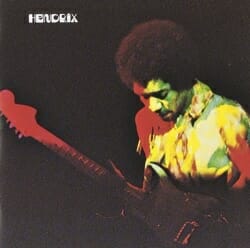 Hendrix’s iconic live record is a collection of two historic performances at New York’s Fillmore East on New Year’s Day 1970. Without his original band, the Jimi Hendrix Experience, Band Of Gypsys is made up of three very talented musicians coming together to create live album magic: the funky, R&B sounds of bassist Billy Cox, an old friend from Hendrix’s early days, and the fusion of rock ’n’ roll drumming from Buddy Miles and the slaying away on the electric guitar by Hendrix. When the album was originally released on March 25, 1970, it peaked at #5 during a 61-week run on the Billboard album chart and after Hendrix’s death in September 1970, it was his bestselling U.S. album since Are You Experienced. Band of Gypsys was the last album Hendrix released, and in just six songs, it shows off how his guitar skills were and still are unmatched. —Daniella Boik
Hendrix’s iconic live record is a collection of two historic performances at New York’s Fillmore East on New Year’s Day 1970. Without his original band, the Jimi Hendrix Experience, Band Of Gypsys is made up of three very talented musicians coming together to create live album magic: the funky, R&B sounds of bassist Billy Cox, an old friend from Hendrix’s early days, and the fusion of rock ’n’ roll drumming from Buddy Miles and the slaying away on the electric guitar by Hendrix. When the album was originally released on March 25, 1970, it peaked at #5 during a 61-week run on the Billboard album chart and after Hendrix’s death in September 1970, it was his bestselling U.S. album since Are You Experienced. Band of Gypsys was the last album Hendrix released, and in just six songs, it shows off how his guitar skills were and still are unmatched. —Daniella Boik
23. Stevie Wonder: Signed, Sealed & Delivered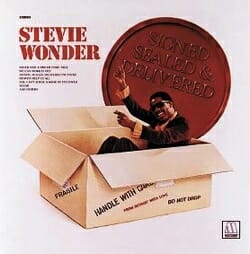 For the first time, Motown agreed to let their boy wonder Stevie produce one of his own records. And that little measure of trust paid off big time, as what came out first was “Signed, Sealed, Delivered I’m Yours,” a smash hit that stayed at the top of the R&B charts for six weeks. Quite an achievement for any singer let alone one who had just turned 20. And just listen to it: it starts off so unassumingly before settling into that effortless-sounding groove and before Wonder and his backup singers burst onto the scene to deliver a message of steadfast love and happiness. Wonder also added a lovely layer of funk to The Beatles’ “We Can Work It Out.” —Robert Ham
For the first time, Motown agreed to let their boy wonder Stevie produce one of his own records. And that little measure of trust paid off big time, as what came out first was “Signed, Sealed, Delivered I’m Yours,” a smash hit that stayed at the top of the R&B charts for six weeks. Quite an achievement for any singer let alone one who had just turned 20. And just listen to it: it starts off so unassumingly before settling into that effortless-sounding groove and before Wonder and his backup singers burst onto the scene to deliver a message of steadfast love and happiness. Wonder also added a lovely layer of funk to The Beatles’ “We Can Work It Out.” —Robert Ham
22. Leonard Cohen: Live at the Isle of Wight 1970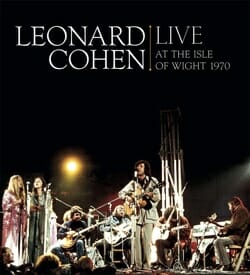 Although he’s nearly 80 years young, Leonard Cohen’s live performances are still hailed as some of the greatest events to be seen in music. Three-hour jaunts, full of costume changes and back-up singers. And hats. Lots of hats. So it’s no surprise that, nearly 45 years earlier, Cohen was already making waves. Live at the Isle of Wight 1970 is a time capsule to that testament. To a crowd of over 600,000, Cohen played the folksiest repertoire of his career and chiseled into place another live statuette in his legacy. —Zohair Hussain
Although he’s nearly 80 years young, Leonard Cohen’s live performances are still hailed as some of the greatest events to be seen in music. Three-hour jaunts, full of costume changes and back-up singers. And hats. Lots of hats. So it’s no surprise that, nearly 45 years earlier, Cohen was already making waves. Live at the Isle of Wight 1970 is a time capsule to that testament. To a crowd of over 600,000, Cohen played the folksiest repertoire of his career and chiseled into place another live statuette in his legacy. —Zohair Hussain
21. Led Zeppelin: Led Zeppelin III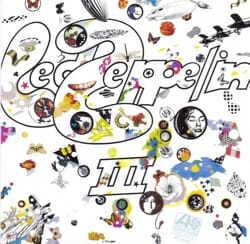 With its celtic acoustics and country vibe, Zeppelin III was the antithesis of Led Zeppelin II— meaning way more Zeppelin (light/acoustic) than Led. The acoustic, black-magic inflections of “Friends,” “Gallows Pole” and “Bron-Y-Aur Stomp” revealed Page’s budding fascination with the British and American folk revival, particularly with Scottish folk guitarist Bert Jansch. In fact, the only heavy song on this album is the opener, “Immigrant Song.” But Plant and Page work together fabulously on the bluesy “Since I’ve Been Loving You,” far more assured than we heard on their 1968 debut. “Tangerine” is the (relatively) unknown gem in their catalogue, a tight and pretty song that ultimately finds a rock groove and features great Plant singing and playing by the entire band. —Michael Salfino
With its celtic acoustics and country vibe, Zeppelin III was the antithesis of Led Zeppelin II— meaning way more Zeppelin (light/acoustic) than Led. The acoustic, black-magic inflections of “Friends,” “Gallows Pole” and “Bron-Y-Aur Stomp” revealed Page’s budding fascination with the British and American folk revival, particularly with Scottish folk guitarist Bert Jansch. In fact, the only heavy song on this album is the opener, “Immigrant Song.” But Plant and Page work together fabulously on the bluesy “Since I’ve Been Loving You,” far more assured than we heard on their 1968 debut. “Tangerine” is the (relatively) unknown gem in their catalogue, a tight and pretty song that ultimately finds a rock groove and features great Plant singing and playing by the entire band. —Michael Salfino
20. Randy Newman: 12 Songs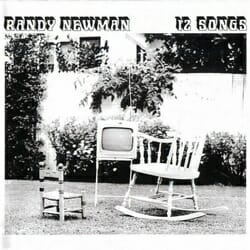 Newman’s second album presented his most twisted narrators backed by his toughest, rootsiest music, featuring Ry Cooder and Clarence White on guitars with a jazz rhythm section. The narrators include an arsonist, a cuckold, a wallflower, a stalker, a junkie, a necrophiliac, a hillbilly drunk and a gas station attendant, all unvarnished examples of the knots that male ego and male desire can tie in a man. Newman writes songs with the same titles as Leonard Cohen’s “Suzanne” and Stephen Foster’s “My Old Kentucky Home” and rips away the gauzy romanticism to reveal the ugly side of their protagonists. All the while, the tight little band behind him is pushing the singer-pianist to dig deeper and deeper. So he does. —Geoffrey Himes
Newman’s second album presented his most twisted narrators backed by his toughest, rootsiest music, featuring Ry Cooder and Clarence White on guitars with a jazz rhythm section. The narrators include an arsonist, a cuckold, a wallflower, a stalker, a junkie, a necrophiliac, a hillbilly drunk and a gas station attendant, all unvarnished examples of the knots that male ego and male desire can tie in a man. Newman writes songs with the same titles as Leonard Cohen’s “Suzanne” and Stephen Foster’s “My Old Kentucky Home” and rips away the gauzy romanticism to reveal the ugly side of their protagonists. All the while, the tight little band behind him is pushing the singer-pianist to dig deeper and deeper. So he does. —Geoffrey Himes
19. The Who: Live at Leeds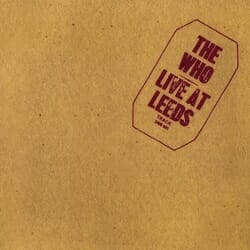 From the 15-minute-long rendition of “My Generation” to the band’s exuberant cover of Eddie Cochran’s classic “Summertime Blues,” The Who performs with no razzle-dazzle or glitz and glamour—Live at Leeds is just about the rock ’n’ roll, trademark slammin’ guitars and endlessly powerful vocals. The first side is chock-full of staples like “Substitute” and “Magic Bus,” and the second side takes us through the entire saga of the much-beloved Tommy and his pinball-related adventures. The Who are vibrant, unassuming and just so damn good that it’s easy to feel like you were really there, watching Pete Townshend smash a guitar and Roger Daltrey’s magnificent head of hair fly back and forth. It’s hard to believe that this album came so early in The Who’s touring career (thus explaining why there’s no “Baba O’Riley,” “Who Are You,” or “Won’t Get Fooled Again”…they hadn’t been released yet); they sing, play and perform with all the skill and unadulterated cool of legends. —Emilia Fredlick
From the 15-minute-long rendition of “My Generation” to the band’s exuberant cover of Eddie Cochran’s classic “Summertime Blues,” The Who performs with no razzle-dazzle or glitz and glamour—Live at Leeds is just about the rock ’n’ roll, trademark slammin’ guitars and endlessly powerful vocals. The first side is chock-full of staples like “Substitute” and “Magic Bus,” and the second side takes us through the entire saga of the much-beloved Tommy and his pinball-related adventures. The Who are vibrant, unassuming and just so damn good that it’s easy to feel like you were really there, watching Pete Townshend smash a guitar and Roger Daltrey’s magnificent head of hair fly back and forth. It’s hard to believe that this album came so early in The Who’s touring career (thus explaining why there’s no “Baba O’Riley,” “Who Are You,” or “Won’t Get Fooled Again”…they hadn’t been released yet); they sing, play and perform with all the skill and unadulterated cool of legends. —Emilia Fredlick
18. Creedence Clearwater Revival: Cosmo’s Factory The fourth of five LPs released in a two-year span, Cosmo’s Factory looks like it could be a greatest hits album. Almost all of the five albums CCR released in 1969 and ’70 look like greatest hits album—that’s how many amazing songs they had over that time period. This one specifically has “Run Through the Jungle,” “Up Around the Bend,” “Who’ll Stop the Rain,” and “Lookin’ Out my Back Door”—as well as one of the weirdest classic rock staples of all time, the 11-minute cover of “I Heard It Through the Grapevine,” an epic choogler with an infinite guitar solo and the most obvious DJ bathroom break song in radio history. —Garrett Martin
The fourth of five LPs released in a two-year span, Cosmo’s Factory looks like it could be a greatest hits album. Almost all of the five albums CCR released in 1969 and ’70 look like greatest hits album—that’s how many amazing songs they had over that time period. This one specifically has “Run Through the Jungle,” “Up Around the Bend,” “Who’ll Stop the Rain,” and “Lookin’ Out my Back Door”—as well as one of the weirdest classic rock staples of all time, the 11-minute cover of “I Heard It Through the Grapevine,” an epic choogler with an infinite guitar solo and the most obvious DJ bathroom break song in radio history. —Garrett Martin
17. Derek and the Dominos: Layla and Other Assorted Love Songs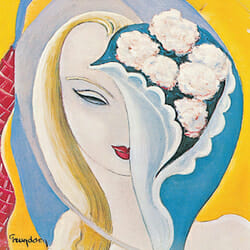 Derek & the Dominos was originally Eric Clapton’s effort to escape the media glare that had been following the guitarist/vocalist following the success of his previous outfits The Yardbirds, Cream and Blind Faith. He quietly wrote a batch of songs with keyboardist Bobby Whitlock and then took them on the road with the help of a rhythm section of Jim Gordon and Carl Radle, all of whom had logged time in Delaney & Bonnie and Friends. They then decamped to Miami to record the tunes, picking up Duane Allman along the way to add slide guitar to the mix. Fueled by Clapton’s romantic woes (he was pining hard for Pattie Boyd, then married to his buddy George Harrison), this group assembled a double album of fiery blues covers, a righteous take on Jimi Hendrix’s “Little Wing” and originals that burned with an unrequited longing and some seriously deep musical chemistry. —Robert Ham
Derek & the Dominos was originally Eric Clapton’s effort to escape the media glare that had been following the guitarist/vocalist following the success of his previous outfits The Yardbirds, Cream and Blind Faith. He quietly wrote a batch of songs with keyboardist Bobby Whitlock and then took them on the road with the help of a rhythm section of Jim Gordon and Carl Radle, all of whom had logged time in Delaney & Bonnie and Friends. They then decamped to Miami to record the tunes, picking up Duane Allman along the way to add slide guitar to the mix. Fueled by Clapton’s romantic woes (he was pining hard for Pattie Boyd, then married to his buddy George Harrison), this group assembled a double album of fiery blues covers, a righteous take on Jimi Hendrix’s “Little Wing” and originals that burned with an unrequited longing and some seriously deep musical chemistry. —Robert Ham
16. James Brown: Sex Machine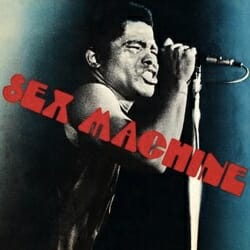 At the end of 1969, Brown drove away his best ever horn section (Maceo Parker, Fred Wesley, Pee Wee Elis and Kush Griffith) as well as guitarist Jimmy Nolen and drummer Melvin Parker. In their place, he hired new horns and his funkiest ever rhythm section, featuring bassist Bootsy Collins and guitarist Catfish Collins. This odd duckling of an album mashes together studio and live recordings from the first band and the earliest studio recordings from the second band, all overdubbed with canned applause and reverb. Nonetheless, the album captures Brown at the peak of his powers with some of his greatest musicians. The title track is not the single version but an astonishing 11-minute workout. Wesley, Ellis, the Parker brothers and the Collins brothers all became stalwarts of Parliament-Funkadelic. —Geoffrey Himes
At the end of 1969, Brown drove away his best ever horn section (Maceo Parker, Fred Wesley, Pee Wee Elis and Kush Griffith) as well as guitarist Jimmy Nolen and drummer Melvin Parker. In their place, he hired new horns and his funkiest ever rhythm section, featuring bassist Bootsy Collins and guitarist Catfish Collins. This odd duckling of an album mashes together studio and live recordings from the first band and the earliest studio recordings from the second band, all overdubbed with canned applause and reverb. Nonetheless, the album captures Brown at the peak of his powers with some of his greatest musicians. The title track is not the single version but an astonishing 11-minute workout. Wesley, Ellis, the Parker brothers and the Collins brothers all became stalwarts of Parliament-Funkadelic. —Geoffrey Himes
15. Black Sabbath: Paranoid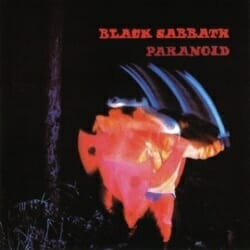 It’s hard to imagine heavy metal or hard rock music without Black Sabbath’s Paranoid. Now 50 years on from its initial release, it’s basically law (and an in-joke) that any band who plays anything vaguely thrashing, sludgey, bluesy or psychedelic, at one point or another, kissed the ground that Black Sabbath walked on. Wander around the grounds of a rock festival or attend a rock show with a several-band bill, and there’s probably a 30 percent chance you’ll encounter a band who’s more than happy to be a third-rate Sabbath. Paranoid was the British band’s most popular album, and it spawned three of their biggest songs: the title track, “War Pigs” and “Iron Man.” It was only released seven months after their self-titled debut, but you could already tell they had figured out their strengths: furious, mean-as-hell riffs with a penchant for sinister, sci-fi doom. Led Zeppelin’s debut came a year earlier, but by 1970, Black Sabbath arguably made Zeppelin’s riffs sound cute by comparison. Paranoid isn’t multi-dimensional by any means, but like its predecessor, it helped lay the groundwork for an entire subset of rock music—it wasn’t folky, prog-y, Southern-fried or happy-go-lucky, it was seething with darkness and melodrama, and of course, Ozzy Osbourne embodies that better than practically anyone else. —Lizzie Manno
It’s hard to imagine heavy metal or hard rock music without Black Sabbath’s Paranoid. Now 50 years on from its initial release, it’s basically law (and an in-joke) that any band who plays anything vaguely thrashing, sludgey, bluesy or psychedelic, at one point or another, kissed the ground that Black Sabbath walked on. Wander around the grounds of a rock festival or attend a rock show with a several-band bill, and there’s probably a 30 percent chance you’ll encounter a band who’s more than happy to be a third-rate Sabbath. Paranoid was the British band’s most popular album, and it spawned three of their biggest songs: the title track, “War Pigs” and “Iron Man.” It was only released seven months after their self-titled debut, but you could already tell they had figured out their strengths: furious, mean-as-hell riffs with a penchant for sinister, sci-fi doom. Led Zeppelin’s debut came a year earlier, but by 1970, Black Sabbath arguably made Zeppelin’s riffs sound cute by comparison. Paranoid isn’t multi-dimensional by any means, but like its predecessor, it helped lay the groundwork for an entire subset of rock music—it wasn’t folky, prog-y, Southern-fried or happy-go-lucky, it was seething with darkness and melodrama, and of course, Ozzy Osbourne embodies that better than practically anyone else. —Lizzie Manno
14. The Stooges: Fun House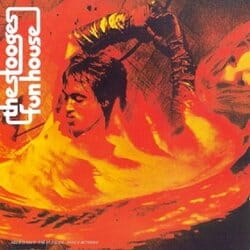 Although The Stooges made their first sonic statement with 1969’s self-titled effort, they didn’t do it right until their sophomore album with the rowdy, Don Galluci-produced Fun House. With the band recording in a raw, live setting, they were almost able to capture their untamable live energy onto tape. The Stooges might have reached a much wider audience with Funhouse’s follow-up, Raw Power, but they never again were able to produce the gritty, warts-and-all intensity seen in staples like “Down on the Street” and “T.V. Eye.” And, maybe to tie in with the album’s title, closing track “L.A. Blues” sounds like Iggy and the boys crying out for help on the way to the loony bin—only this time, they’re using wailing guitars; harsh, stick-splintering drums; and Pop’s unmistakable wail. —Tyler Kane
Although The Stooges made their first sonic statement with 1969’s self-titled effort, they didn’t do it right until their sophomore album with the rowdy, Don Galluci-produced Fun House. With the band recording in a raw, live setting, they were almost able to capture their untamable live energy onto tape. The Stooges might have reached a much wider audience with Funhouse’s follow-up, Raw Power, but they never again were able to produce the gritty, warts-and-all intensity seen in staples like “Down on the Street” and “T.V. Eye.” And, maybe to tie in with the album’s title, closing track “L.A. Blues” sounds like Iggy and the boys crying out for help on the way to the loony bin—only this time, they’re using wailing guitars; harsh, stick-splintering drums; and Pop’s unmistakable wail. —Tyler Kane
13. James Taylor: Sweet Baby James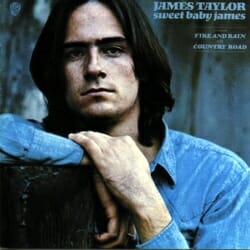 James Taylor is hard to dislike. There’s an earnest warmth to all of his music. Sure, it’s inoffensive and always well-meaning, but even most curmudgeons will admit to being charmed by his soft-hearted tunes. His music is a crucial part of the fabric of American culture—I mean, who among us has parents, aunts and uncles or grandparents that don’t adore Taylor? Taylor made introspective, folky soft rock that helped define the modern singer/songwriter tradition. By the early ‘70s, the dust hadn’t yet settled after such a revolutionary decade, and intergenerational discord still remained, but apolitical music with wide-ranging appeal still had its place. Taylor’s 1968 debut album underperformed commercially, but the follow-up, Sweet Baby James, arrived two years later, sold millions of copies and kickstarted his decades-long career. One reason an album like Sweet Baby James didn’t appear tone-deaf in spite of the times was because of Taylor’s raw depiction of his inner demons. Taylor struggled with drug addiction and depression, two factors that led to his exemption from serving in the Vietnam War, and he sings of these pains on songs like “Steamroller Blues” and “Sunny Skies.” While following deeply American traditions of singing personal tales about overcoming darkness, the music was also unabashedly rootsy, but it blended influences well enough that it still felt fresh. With its slightly twangy acoustic pop sound, it’s Taylor’s best album for a melancholic Sunday stroll—and his finest album, period. —Lizzie Manno
James Taylor is hard to dislike. There’s an earnest warmth to all of his music. Sure, it’s inoffensive and always well-meaning, but even most curmudgeons will admit to being charmed by his soft-hearted tunes. His music is a crucial part of the fabric of American culture—I mean, who among us has parents, aunts and uncles or grandparents that don’t adore Taylor? Taylor made introspective, folky soft rock that helped define the modern singer/songwriter tradition. By the early ‘70s, the dust hadn’t yet settled after such a revolutionary decade, and intergenerational discord still remained, but apolitical music with wide-ranging appeal still had its place. Taylor’s 1968 debut album underperformed commercially, but the follow-up, Sweet Baby James, arrived two years later, sold millions of copies and kickstarted his decades-long career. One reason an album like Sweet Baby James didn’t appear tone-deaf in spite of the times was because of Taylor’s raw depiction of his inner demons. Taylor struggled with drug addiction and depression, two factors that led to his exemption from serving in the Vietnam War, and he sings of these pains on songs like “Steamroller Blues” and “Sunny Skies.” While following deeply American traditions of singing personal tales about overcoming darkness, the music was also unabashedly rootsy, but it blended influences well enough that it still felt fresh. With its slightly twangy acoustic pop sound, it’s Taylor’s best album for a melancholic Sunday stroll—and his finest album, period. —Lizzie Manno
12. Crosby Stills Nash & Young: Déjà Vu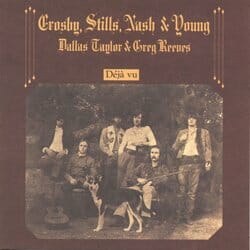 With the follow-up to Crosby, Stills & Nash’s critically acclaimed debut, the group decided to enlist the talents of Canadian singer/songwriter Neil Young. All of the group’s members, including Young, had already established themselves as musical powerhouses through their work with previous bands Buffalo Springfield (Stills and Young), The Byrds (Crosby), and The Hollies (Nash), and all were on the verge of launching successful solo careers as well. With the addition of Young, CSN gained an extra voice to add to their already complex tidal waves of harmony as well as another unique songwriter. The result turned the band that is often cited as one of the first supergroups into something even better. Despite the tensions within the band that stunted their potential over the following years, the fusion of country/folk songwriting with psychedelic/hippie flair and pop sensibility caused Déjà Vu to become a standout record of its time and the diamond of the group’s catalog. —Wyndham Wyeth
With the follow-up to Crosby, Stills & Nash’s critically acclaimed debut, the group decided to enlist the talents of Canadian singer/songwriter Neil Young. All of the group’s members, including Young, had already established themselves as musical powerhouses through their work with previous bands Buffalo Springfield (Stills and Young), The Byrds (Crosby), and The Hollies (Nash), and all were on the verge of launching successful solo careers as well. With the addition of Young, CSN gained an extra voice to add to their already complex tidal waves of harmony as well as another unique songwriter. The result turned the band that is often cited as one of the first supergroups into something even better. Despite the tensions within the band that stunted their potential over the following years, the fusion of country/folk songwriting with psychedelic/hippie flair and pop sensibility caused Déjà Vu to become a standout record of its time and the diamond of the group’s catalog. —Wyndham Wyeth
11. The Velvet Underground: Loaded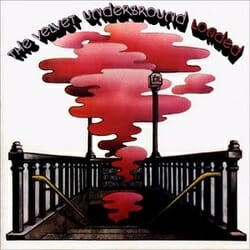 Loaded was the final album recorded with Lou Reed, and the band’s clearest attempt at making radio-friendly music. In the time after it came out, Reed distanced himself from the final product, but the trifecta of “Who Loves the Sun,” “Sweet Jane” and “Rock & Roll” is among the best three-song openings on any rock and roll record. It’s as good a soundtrack for the first few minutes of a summer day as there is, and guaranteed by doctors to erase a hangover instantly.*
Loaded was the final album recorded with Lou Reed, and the band’s clearest attempt at making radio-friendly music. In the time after it came out, Reed distanced himself from the final product, but the trifecta of “Who Loves the Sun,” “Sweet Jane” and “Rock & Roll” is among the best three-song openings on any rock and roll record. It’s as good a soundtrack for the first few minutes of a summer day as there is, and guaranteed by doctors to erase a hangover instantly.*
*Maybe. —Jeff Gonick
10. George Harrison: All Things Must Pass While his mate John Lennon was quick with the catchy hooks for the peace and love movement of the times, it was George who answered with specific instructions, exemplified in songs like “Awaiting On You All”: “You don’t need a love in, you don’t need a bed pan. You don’t need a horoscope or a microscope to see the mess that you’re in.” Co-producer Phil Spector’s wall-of-sound brings a layered depth (listen to “Wah-Wah”) to Harrison’s impressive cache of talent, which included Ringo, Eric Clapton, Badfinger, Dave Mason, Billy Preston and the infamous saxophonist Bobby Keys, whose signature licks were heard on many a 1970s album, like the Stones’ Exile On Main Street. Harrison’s devotion to the Hindu god Krishna permeates the 20+ tracks. The innocently plagiarized “My Sweet Lord” still stands as a symbol of the personal musical exhilaration Harrison must have experienced with his post-Beatles explosion of songwriting, long kept in the shadows by the hugeness that was Lennon and McCartney. —Tim Basham
While his mate John Lennon was quick with the catchy hooks for the peace and love movement of the times, it was George who answered with specific instructions, exemplified in songs like “Awaiting On You All”: “You don’t need a love in, you don’t need a bed pan. You don’t need a horoscope or a microscope to see the mess that you’re in.” Co-producer Phil Spector’s wall-of-sound brings a layered depth (listen to “Wah-Wah”) to Harrison’s impressive cache of talent, which included Ringo, Eric Clapton, Badfinger, Dave Mason, Billy Preston and the infamous saxophonist Bobby Keys, whose signature licks were heard on many a 1970s album, like the Stones’ Exile On Main Street. Harrison’s devotion to the Hindu god Krishna permeates the 20+ tracks. The innocently plagiarized “My Sweet Lord” still stands as a symbol of the personal musical exhilaration Harrison must have experienced with his post-Beatles explosion of songwriting, long kept in the shadows by the hugeness that was Lennon and McCartney. —Tim Basham
9. Joni Mitchell: Ladies of the Canyon The title track of Joni Mitchell’s 1970 album Ladies Of The Canyon describes three women. They lived in Laurel Canyon, up in the Hollywood Hills, along a mountain gorge that had long been a bohemian refuge not far from Sunset Strip. In the late ’60s, folk and rock ‘n’ roll musicians began moving into the cheap cottages on the dead-end streets branching off Laurel Canyon Boulevard. Mitchell lived in one such home with her then-lover Graham Nash, who immortalized it as “a very, very, very fine house with two cats in the yard” and who has always insisted he first sang with David Crosby and Stephen Stills in that cottage. There was a lot of sex and drugs going on, but we’ll leave those stories to the anthropologists. What endures from that time is a particular kind of music, a reaction to the urban, street-corner masculinity of most rock ‘n’ roll before 1970. By contrast, the Laurel Canyon Sound was rural, domestic and feminine, full of introspective lyrics, twangy wood instruments and pillowy vocal blends. And Mitchell was the genre’s true genius. One of the women in the song “Ladies of the Canyon,” was Trina (loosely based on cartoonist/artist Trina Robbins), who embroidered her second-hand coat with leaves and vines. Yes, it was beautiful, but is this “antique luxury” rebellion or middle-class privilege? Annie (loosely based on the Mamas and Papas’ Cass Elliot) fed every stray who walked in—feral cat or male musician, it didn’t matter. But was this maternal magnanimity or servile co-dependence? Estrella (loosely based on Mitchell herself) hurled “songs like tiny hammers” at “beveled mirrors in empty halls.” The domestic sphere of women deserves attention, she implied, but at what point does it become merely insular? With such questions, Mitchell pushed the boundaries of the Laurel Canyon Sound as far as it could go. —Geoffrey Himes
The title track of Joni Mitchell’s 1970 album Ladies Of The Canyon describes three women. They lived in Laurel Canyon, up in the Hollywood Hills, along a mountain gorge that had long been a bohemian refuge not far from Sunset Strip. In the late ’60s, folk and rock ‘n’ roll musicians began moving into the cheap cottages on the dead-end streets branching off Laurel Canyon Boulevard. Mitchell lived in one such home with her then-lover Graham Nash, who immortalized it as “a very, very, very fine house with two cats in the yard” and who has always insisted he first sang with David Crosby and Stephen Stills in that cottage. There was a lot of sex and drugs going on, but we’ll leave those stories to the anthropologists. What endures from that time is a particular kind of music, a reaction to the urban, street-corner masculinity of most rock ‘n’ roll before 1970. By contrast, the Laurel Canyon Sound was rural, domestic and feminine, full of introspective lyrics, twangy wood instruments and pillowy vocal blends. And Mitchell was the genre’s true genius. One of the women in the song “Ladies of the Canyon,” was Trina (loosely based on cartoonist/artist Trina Robbins), who embroidered her second-hand coat with leaves and vines. Yes, it was beautiful, but is this “antique luxury” rebellion or middle-class privilege? Annie (loosely based on the Mamas and Papas’ Cass Elliot) fed every stray who walked in—feral cat or male musician, it didn’t matter. But was this maternal magnanimity or servile co-dependence? Estrella (loosely based on Mitchell herself) hurled “songs like tiny hammers” at “beveled mirrors in empty halls.” The domestic sphere of women deserves attention, she implied, but at what point does it become merely insular? With such questions, Mitchell pushed the boundaries of the Laurel Canyon Sound as far as it could go. —Geoffrey Himes
8. Grateful Dead: Workingman’s Dead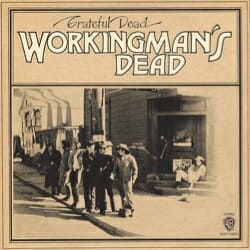 Workingman’s Dead is the Grateful Dead doing their best Crosby, Stills, Nash & Young impression—but luckily for them, they pulled it off extraordinarily well. Jerry Garcia reportedly suggested that the band record the entirety of this album “all in three weeks and get it the hell out of the way.” They succeeded in that endeavor, but, by the sound of it, you wouldn’t know Garcia and co. spent a total of about only nine days in San Francisco’s Pacific High Recording Studio laying down the album. Workingman’s Dead is the original Dead lineup at their cleanest and most concise. By 1970, the Dead had pretty much already solidified themselves as live legends, but people weren’t as enamored with their studio releases. When this album came along, however, it took the band to a whole new level. Garcia’s voice melted with those of Bob Weir and bassist Phil Lesh in a manner that felt intentional and bright. Gone was the Grateful Dead who seemed indifferent to harmony and focused solely on crafting a wild, trance-like live show. Now, they had mastered both, and were on their way to becoming one of the most popular acts in the country. Even now, Workingman’s Dead holds up beautifully. It was responsible for hits “Casey Jones” and “Uncle John’s Band,” both songs that put Robert Hunter’s lyrical finesse on full display. And the songs themselves were more folksy and shaggy, occasionally twinkling with the shine of a pedal steel guitar and dripping with a drawl the group had seemingly assumed overnight. For maybe the first time, here the Grateful Dead seemed truly akin with the great studio rock and folk-rock bands of the day. —Ellen Johnson
Workingman’s Dead is the Grateful Dead doing their best Crosby, Stills, Nash & Young impression—but luckily for them, they pulled it off extraordinarily well. Jerry Garcia reportedly suggested that the band record the entirety of this album “all in three weeks and get it the hell out of the way.” They succeeded in that endeavor, but, by the sound of it, you wouldn’t know Garcia and co. spent a total of about only nine days in San Francisco’s Pacific High Recording Studio laying down the album. Workingman’s Dead is the original Dead lineup at their cleanest and most concise. By 1970, the Dead had pretty much already solidified themselves as live legends, but people weren’t as enamored with their studio releases. When this album came along, however, it took the band to a whole new level. Garcia’s voice melted with those of Bob Weir and bassist Phil Lesh in a manner that felt intentional and bright. Gone was the Grateful Dead who seemed indifferent to harmony and focused solely on crafting a wild, trance-like live show. Now, they had mastered both, and were on their way to becoming one of the most popular acts in the country. Even now, Workingman’s Dead holds up beautifully. It was responsible for hits “Casey Jones” and “Uncle John’s Band,” both songs that put Robert Hunter’s lyrical finesse on full display. And the songs themselves were more folksy and shaggy, occasionally twinkling with the shine of a pedal steel guitar and dripping with a drawl the group had seemingly assumed overnight. For maybe the first time, here the Grateful Dead seemed truly akin with the great studio rock and folk-rock bands of the day. —Ellen Johnson
7. The Kinks: Lola Versus Powerman and the Moneygoround, Part One 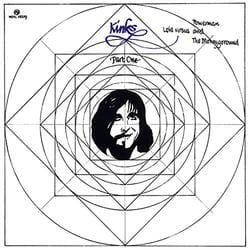 Some of the best music in existence was written to poke fun at the music industry, which was the source of inspiration for Lola versus Powerman, including tracks like “Top of the Pops,” “Denmark Street” and “Get Back In Line.” The band’s musings on the modern age are still every bit worth pondering and absorbing as they were back then. “This Time Tomorrow” still induces chills; “Lola” can still get crowds of all ages and at all levels of inebriation going. —Lindsay Eanet
Some of the best music in existence was written to poke fun at the music industry, which was the source of inspiration for Lola versus Powerman, including tracks like “Top of the Pops,” “Denmark Street” and “Get Back In Line.” The band’s musings on the modern age are still every bit worth pondering and absorbing as they were back then. “This Time Tomorrow” still induces chills; “Lola” can still get crowds of all ages and at all levels of inebriation going. —Lindsay Eanet
6. The Beatles: Let it Be The thing about Let It Be is that it was recorded in the death throes of a band no longer at the top of its game. Many fans don’t realize—because the songs are still, for the most part, all classics—that they were actually playing stylistic catch-up on the album. In Get Back, the large tome detailing the recording of Let It Be, there’s an instance where John tells the other Beatles that they “have to make it sound more like The Band.” The Beatles were no longer groundbreaking or cool when they made Let It Be, but some of their greatest songs came out of the process. The last album they released ended up being a fitting snapshot, a manifestation of every major trope of their music and careers: the sweetness of a McCartney/Lennon love ditty (“Two of Us”), John celebrating Yoko and his ever-present new life (“Dig A Pony”), George Harrison’s growth and presence as a songwriter (“For You Blue”), the Scouse charm and humor that earned them a base in the first place (the Liverpudlian folk song “Maggie Mae”), their ability to pick at our consciousness (“Across the Universe”), their occasional non-sequitur weirdness (“Dig It”), the life-affirming rockers (“Don’t Let Me Down,” “Get Back”). And then, there’s the title track, still ever capable of making the hardest fan weep. “The only currency in this bankrupt world,” we’re told in the gospels of Almost Famous, “Is what we share with someone else when we’re uncool.” If that’s the case, the Beatles made us all exponentially richer. —Lindsay Eanet
The thing about Let It Be is that it was recorded in the death throes of a band no longer at the top of its game. Many fans don’t realize—because the songs are still, for the most part, all classics—that they were actually playing stylistic catch-up on the album. In Get Back, the large tome detailing the recording of Let It Be, there’s an instance where John tells the other Beatles that they “have to make it sound more like The Band.” The Beatles were no longer groundbreaking or cool when they made Let It Be, but some of their greatest songs came out of the process. The last album they released ended up being a fitting snapshot, a manifestation of every major trope of their music and careers: the sweetness of a McCartney/Lennon love ditty (“Two of Us”), John celebrating Yoko and his ever-present new life (“Dig A Pony”), George Harrison’s growth and presence as a songwriter (“For You Blue”), the Scouse charm and humor that earned them a base in the first place (the Liverpudlian folk song “Maggie Mae”), their ability to pick at our consciousness (“Across the Universe”), their occasional non-sequitur weirdness (“Dig It”), the life-affirming rockers (“Don’t Let Me Down,” “Get Back”). And then, there’s the title track, still ever capable of making the hardest fan weep. “The only currency in this bankrupt world,” we’re told in the gospels of Almost Famous, “Is what we share with someone else when we’re uncool.” If that’s the case, the Beatles made us all exponentially richer. —Lindsay Eanet
5. The Grateful Dead: American Beauty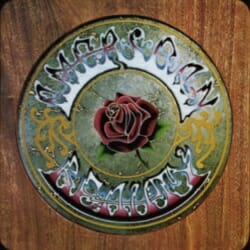 All the mythology and cultural symbolism (or baggage) around the Grateful Dead tends to obscure the actual music, at least with regard to the band’s studio output. Truth be told, the hippie avatars could be wildly inconsistent, even from one track to the next on the same album. When they were good, though, the Dead were often great, and 1970’s American Beauty is sublime. The band’s fifth studio album has a familiar, broken-in feel the first time you hear it, and also a taut musicality that wasn’t always present. American Beauty came out less than five months after its predecessor, Workingman’s Dead, and both albums blended elements of bluegrass, country and folk into the Dead’s trademark meandering psychedelia. American Beauty differed by including more vocal harmonies, less of Jerry Garcia’s lead guitar (he played a lot of pedal steel here) and a broader range of songwriting contributions. While Garcia and lyricist Robert Hunter wrote half of the 10 tracks, including the Dead standards “Ripple” and “Friend of the Devil” (co-written with John Dawson), bassist Phil Lesh, guitarist Bob Weir and keyboard player Ron “Pigpen” McKernan account for the rest, including the other Dead standards “Sugar Magnolia” (Weir and Hunter) and “Truckin’” (Garcia, Lesh, Weir and Hunter). It’s also a more vocally diverse album, with lead vocals from Weir, Lesh and even Pigpen. Tinkering with country and folk wasn’t unusual for rock bands in 1970, but few did it better than the Grateful Dead on American Beauty. —Eric R. Danton
All the mythology and cultural symbolism (or baggage) around the Grateful Dead tends to obscure the actual music, at least with regard to the band’s studio output. Truth be told, the hippie avatars could be wildly inconsistent, even from one track to the next on the same album. When they were good, though, the Dead were often great, and 1970’s American Beauty is sublime. The band’s fifth studio album has a familiar, broken-in feel the first time you hear it, and also a taut musicality that wasn’t always present. American Beauty came out less than five months after its predecessor, Workingman’s Dead, and both albums blended elements of bluegrass, country and folk into the Dead’s trademark meandering psychedelia. American Beauty differed by including more vocal harmonies, less of Jerry Garcia’s lead guitar (he played a lot of pedal steel here) and a broader range of songwriting contributions. While Garcia and lyricist Robert Hunter wrote half of the 10 tracks, including the Dead standards “Ripple” and “Friend of the Devil” (co-written with John Dawson), bassist Phil Lesh, guitarist Bob Weir and keyboard player Ron “Pigpen” McKernan account for the rest, including the other Dead standards “Sugar Magnolia” (Weir and Hunter) and “Truckin’” (Garcia, Lesh, Weir and Hunter). It’s also a more vocally diverse album, with lead vocals from Weir, Lesh and even Pigpen. Tinkering with country and folk wasn’t unusual for rock bands in 1970, but few did it better than the Grateful Dead on American Beauty. —Eric R. Danton
4. Simon & Garfunkel: Bridge Over Troubled Water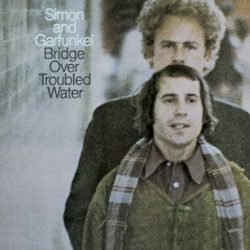 With the release of their glorious swan song, Bridge Over Troubled Water, Simon & Garfunkel began the 1970s with a devastating finale. And what a way to go out: Though they’d already laid the groundwork on 1968’s subtly expansive Bookends, Simon & Garfunkel’s last—and best—album is also their most eclectic. Opening with the gospel-tinged title track, which featured Garfunkel’s all-time finest lead vocal, Bridge Over Troubled Water never relents its focus, even as it sprawls: “El Condor Pasa (If I Could)” is a mystical folk gem; the ramshackle pop of “Cecilia” is the very definition of a sing-along; meanwhile, the aching, psychedelic ballad “The Only Living Boy in New York” is simply the greatest song they ever released—sort of like having your heart demolished and swiftly re-assembled in just under four minutes. —Ryan Reed
With the release of their glorious swan song, Bridge Over Troubled Water, Simon & Garfunkel began the 1970s with a devastating finale. And what a way to go out: Though they’d already laid the groundwork on 1968’s subtly expansive Bookends, Simon & Garfunkel’s last—and best—album is also their most eclectic. Opening with the gospel-tinged title track, which featured Garfunkel’s all-time finest lead vocal, Bridge Over Troubled Water never relents its focus, even as it sprawls: “El Condor Pasa (If I Could)” is a mystical folk gem; the ramshackle pop of “Cecilia” is the very definition of a sing-along; meanwhile, the aching, psychedelic ballad “The Only Living Boy in New York” is simply the greatest song they ever released—sort of like having your heart demolished and swiftly re-assembled in just under four minutes. —Ryan Reed
3. Miles Davis: Bitches Brew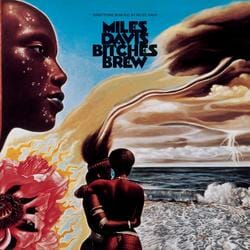 After playing at the forefront of jazz for decades, Miles Davis had nothing left to prove by 1970. When Bitches Brew came out that year, it reflected his belief that things had changed and that it was rock musicians and not jazz players who were extending the boundaries of what was possible. With tracks like “Pharaoh’s Dance” and “Spanish Key” averaging around 20 minutes each, Bitches Brew successfully fused Miles Davis’ staccato, wailing trumpet with the psychedelic sounds he’d been soaking up by hanging out in San Francisco and opening up for bands like The Grateful Dead and Santana. More than 40 years after it was first released, Bitches Brew is still one of the most aggressive, confrontational and downright beautiful albums ever recorded. —Doug Heselgrave
After playing at the forefront of jazz for decades, Miles Davis had nothing left to prove by 1970. When Bitches Brew came out that year, it reflected his belief that things had changed and that it was rock musicians and not jazz players who were extending the boundaries of what was possible. With tracks like “Pharaoh’s Dance” and “Spanish Key” averaging around 20 minutes each, Bitches Brew successfully fused Miles Davis’ staccato, wailing trumpet with the psychedelic sounds he’d been soaking up by hanging out in San Francisco and opening up for bands like The Grateful Dead and Santana. More than 40 years after it was first released, Bitches Brew is still one of the most aggressive, confrontational and downright beautiful albums ever recorded. —Doug Heselgrave
2. Neil Young: After the Gold Rush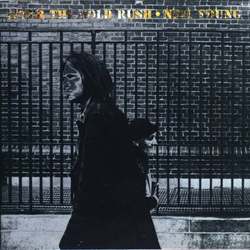 Along with Bob Dylan’s Blood on the Tracks, After the Gold Rush is one of the greatest break-up records ever made regardless of intention. Even though it has nothing to do with the album, which was inspired by a Dean Stockwell-Herb Berman screenplay, I liked to imagine that it was written to capture the feeling too often ignored by movies and music. The truth of loss that comes after the magic, after the bum-rush of serotonin and possibilities, after you realize the holes inside haven’t been plugged, that the overflow of emotion you poured in ran right out. —Jeff Gonick
Along with Bob Dylan’s Blood on the Tracks, After the Gold Rush is one of the greatest break-up records ever made regardless of intention. Even though it has nothing to do with the album, which was inspired by a Dean Stockwell-Herb Berman screenplay, I liked to imagine that it was written to capture the feeling too often ignored by movies and music. The truth of loss that comes after the magic, after the bum-rush of serotonin and possibilities, after you realize the holes inside haven’t been plugged, that the overflow of emotion you poured in ran right out. —Jeff Gonick
1. Van Morrison: Moondance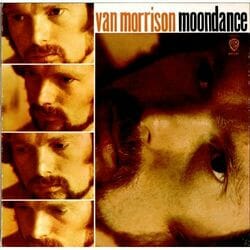 On his third solo release, the Belfast troubadour reached a hallowed space between the irresistible pop structure of “Brown Eyed Girl” and the impenetrable poetry of 1968’s Astral Weeks. Moondance was calculating in its musical precision, but unrestrained in its radiating and joyful imagery, as exemplified in songs like the title track, “Caravan,” and “Crazy Love.” Even decades removed, Moondance still serves as the one-disc, single-artist soundtrack to ‘70s FM radio. —Hilary Saunders
On his third solo release, the Belfast troubadour reached a hallowed space between the irresistible pop structure of “Brown Eyed Girl” and the impenetrable poetry of 1968’s Astral Weeks. Moondance was calculating in its musical precision, but unrestrained in its radiating and joyful imagery, as exemplified in songs like the title track, “Caravan,” and “Crazy Love.” Even decades removed, Moondance still serves as the one-disc, single-artist soundtrack to ‘70s FM radio. —Hilary Saunders